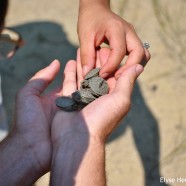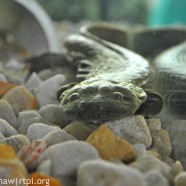Coastal Adventure
The other week I had the opportunity to adventure out to Connecticut and Rhode Island for a week of learning. As you all know, we have a number of projects running in coastal Connecticut monitoring shorebirds and educating the public about the many federally and state listed species that reside there, and we have some wonderful RTPI staff stationed there as well. On my trip I was able to spend some time with Scott Kruitbosch, our Conservation and Outreach Coordinator, looking at several of the sites where projects for shorebirds, migrating raptors and coastal remediation are taking place. It...
Read MoreNorthern Dusky Salamander (Desmognathus fuscus)
In the Chautauqua-Allegheny Region we have two species of dusky salamanders that have a lot in common. Do you have any idea which dusky this is? I’ll give you a hint: take a good look at the tail of this individual. Give up? This is a Northern Dusky Salamander (Desmognathus fuscus), often mistaken for its relative the Allegheny Mountain Dusky Salamander (Desmognathus ochrophaeus). Northern duskies have a distinctive keel on their tail whereas mountain duskies have round tails from base to tip, making it a little easier to tell the two very similar species apart. As you are getting out...
Read MoreNEPARC Annual Meeting
Last week I got the opportunity to attend my first NEPARC (Northeast Partners in Amphibian and Reptile Conservation) annual meeting held at Allegany State Park in Salamanca, New York. For those that aren’t familiar with the not for profit, NEPARC is a regional subset of PARC or Partners in Amphibian and Reptile Conservation. This organization forms inclusive partnerships with like-minded professionals and citizens that are dedicated to the conservation of amphibians, reptiles and their respective habitats throughout each region of the United States and beyond. PARC interacts with...
Read More






